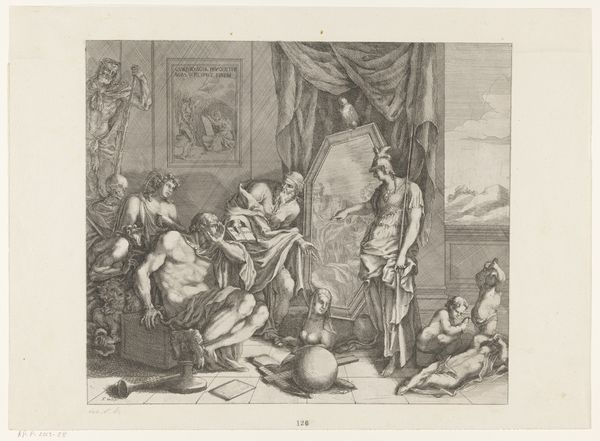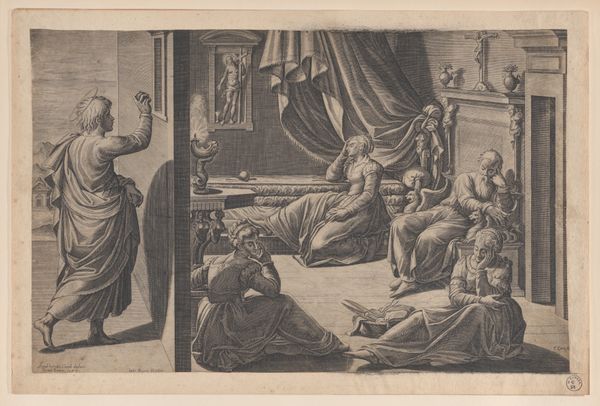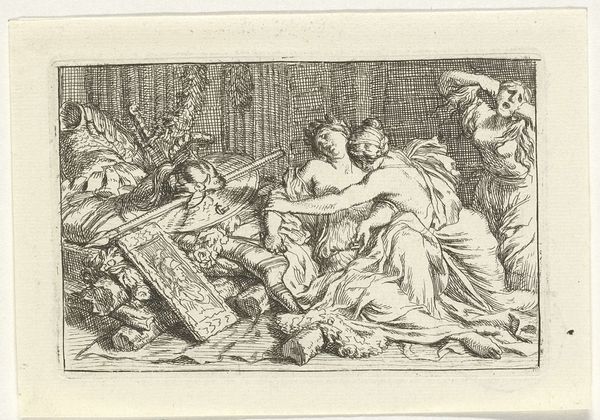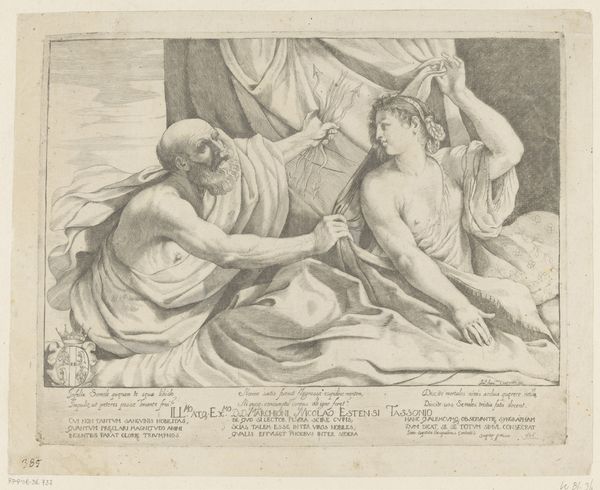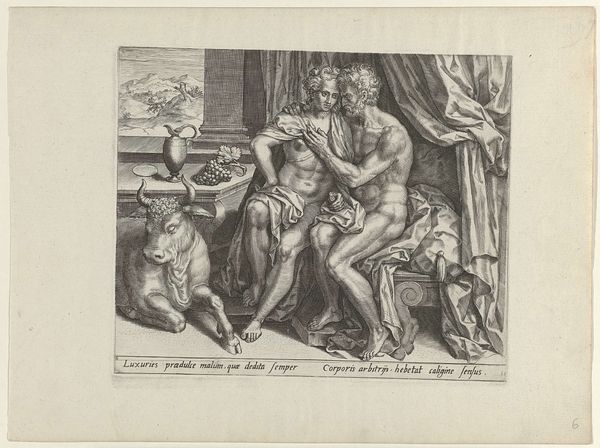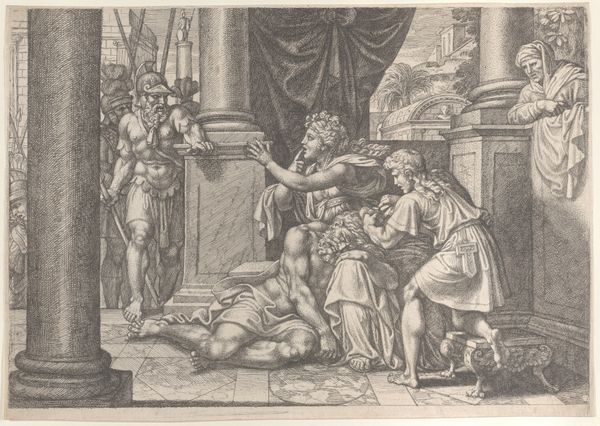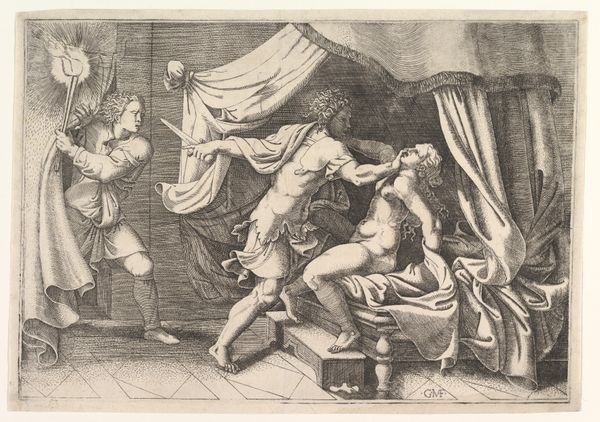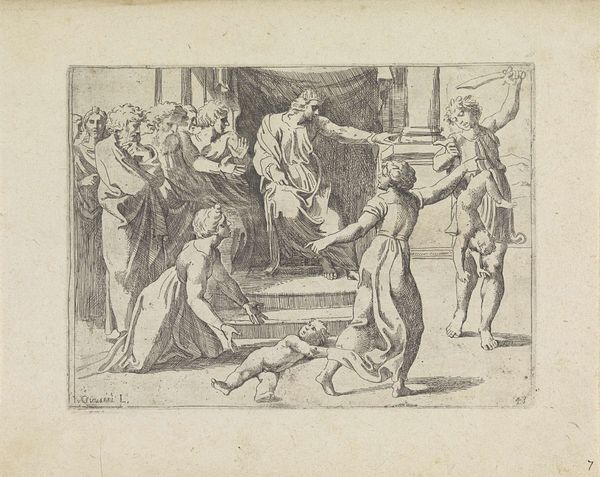
print, engraving
# print
#
mannerism
#
figuration
#
history-painting
#
italian-renaissance
#
nude
#
engraving
Dimensions: height 229 mm, width 343 mm
Copyright: Rijks Museum: Open Domain
Editor: Here we have Enea Vico's engraving "Venus en Vulcanus" from 1543. I'm struck by the composition; Venus reclines in bed while Vulcan works at his forge. It’s almost voyeuristic, like we’ve stumbled upon a private, and slightly awkward, moment. What do you make of it? Curator: The voyeuristic feeling you describe is critical, and quite deliberate I believe. This piece isn't just about illustrating a mythological scene; it's about power and its visual representation within 16th-century social structures. How might the intended audience – likely wealthy, educated men – have interpreted this depiction of a goddess caught in a compromising situation? Editor: Maybe as a kind of cautionary tale? Or a display of male dominance? The contrast between Venus's repose and Vulcan’s active labor certainly highlights different forms of power. Curator: Precisely. And consider the print medium itself. Engravings like this were reproducible, and circulated widely. They played a key role in disseminating ideas about beauty, gender roles, and acceptable behavior. Was this image a subtle warning about unchecked female sexuality perhaps? Note that the artistic Mannerism places the idealized beauty in sometimes contorted and unnatural positions. Editor: So the "history-painting" label reflects that dissemination and not necessarily an accurate history of this myth? Curator: Correct. This wasn't reportage, but rather myth used to project particular social norms through ownership and popular culture. The artist has also inscribed two other artist names suggesting authorship; in today's age, we may discuss the value or issues related to cultural appropriation. The Rijksmuseum places this piece with Italian Renaissance artwork. Editor: It’s fascinating how a seemingly simple mythological scene can reveal so much about the socio-political landscape of its time. I will remember to seek such inscriptions from now on! Curator: Indeed. It reminds us that art doesn't exist in a vacuum. Examining its historical and cultural context is essential to understanding its true meaning and impact.
Comments
No comments
Be the first to comment and join the conversation on the ultimate creative platform.

